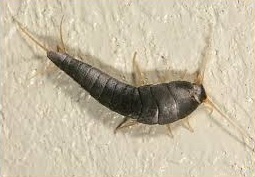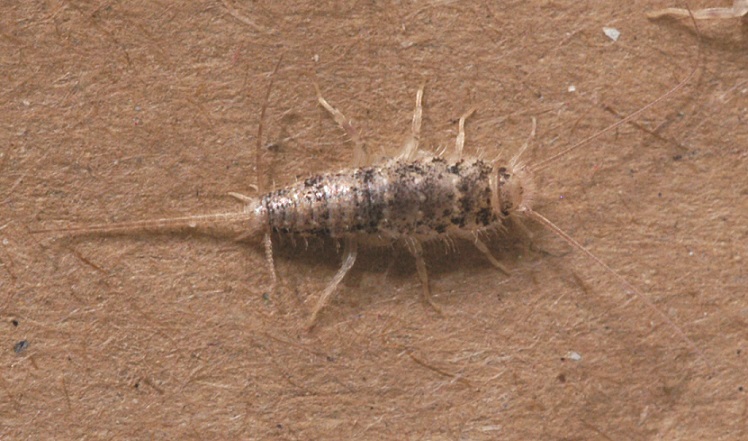Silverfish and firebrats
When the Archaeognatha were recognised as a separate order of insects, the remaining group of silverfish, firebrats and their relatives were sometimes still known as the Thysanura, but to avoid confusion with the older broad grouping they are now generally called the Zygentoma.
There are many superficial similarities between the two orders, but the dicondylous mandibles clearly place the Zygentoma close to the higher insects. The general body shape is less cylindrical than in the Archaeognatha, tapering towards the rear, and dorsoventrally flattened.
There is a similar covering of scales, and the common name silverfish is derived from this shiny covering and fish-like shape, perhaps coupled with the sinuous body movements made by the fast-running adults.
 Lepisma saccharina Credit Jim Hardie
Lepisma saccharina Credit Jim HardieThere is a long terminal filament and two lateral cerci, giving a similar three-tailed appearance to the Archaeognatha, but in the Zygentoma the cerci are often held at a wider angle, sometimes even at right-angles to the body.
The eyes are reduced or even absent, and there are no ocelli. The long antennae resemble those of the Archaeognatha, but the five-segmented maxillary palps are of normal length. Although silverfish can run fast, they lack the jumping ability of the bristletails, but their slippery scales probably give them similar protection from potential predators.
 Thermobia domestica the firebrat Credit Peter Barnard
Thermobia domestica the firebrat Credit Peter BarnardWorldwide there are around 400 known species in 5 families; in Britain there are 2 species in 1 family.
Identification help